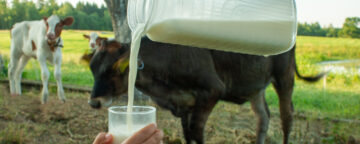Visiting Scholar Jo Holz (ASC ’81) joined the Annenberg Public Policy Center in July to begin work on a sociocultural history of American children’s television. Her resulting book will cover the development of major television shows from the beginning of children’s programming up through present-day offerings.
Holz first came to the Annenberg School for Communication to study political communication after closely following the Watergate scandal while working for the mayor of Boston in the 1970s. Her interest in Watergate prompted a coworker to suggest she look into the Annenberg School at Penn for graduate school. At ASC she earned her master’s degree in communication with a thesis focusing on Watergate, and a Ph.D. with a dissertation on agenda setting. Her dissertation considered how the media’s description of an anticipated event – a march by neo-Nazis in Skokie, Ill., home to a number of Holocaust survivors – affected the public perception of the event.
Her graduate studies at the Annenberg School for Communication (described in this video) eventually led her to work as head of research for Children’s Television Workshop, now called Sesame Workshop, and subsequently to a position as Senior Vice President of Research at Nielsen, the global information and measurement company.

Still, it was her memories of the shows she watched as a child growing up in Boston, like “The Howdy Doody Show,” “Ding Dong School,” and “The Pinky Lee Show,” that inspired her current project. “I am an immigrant; I was born in Germany. I came here when I was four years old and television played a huge role in my family in learning American culture and, really, socialization, language. One of the first things we got — and we were pretty poor when we first got here — was this big, honkin’ television! The television was on 24/7 in my household. We watched a lot of television, and the children’s shows that I watched were very important and very meaningful to me. I remember those shows now very vividly with affection.”
Holz said this book will likely be the first of its kind, covering the entire span of American children’s television, rather than focusing on one show in particular or on children’s TV as a subtopic in an analysis of TV in general. The earliest shows date back to 1946-47, including “The Howdy Doody Show” on NBC, and “Small Fry Club” and “Birthday Party,” both on the DuMont Television Network.
“A lot has been written about ‘Sesame Street’ from a kind of sociocultural view point, a lot of analysis has been done of the show. When I was working [at Children’s Television Workshop] I thought, you know somebody should really look at the whole history of children’s television and how it has evolved and how the kinds of shows that have been offered to children have changed as the country has changed and as our norms and our values have changed, our culture has changed, and how we think about children has changed. We don’t think about children the same way that we did in the 1940s and 1950s or even the 1960s in terms of what would be entertaining to children, what would be good for children, what would be harmful to children.”

Everything from gender norms and expectations to humor to depictions of family life has changed dramatically in the more than 50 years since the beginning of children’s programming. Children’s shows, she said, are also significantly shaped by trends in adult television. Cartoons, for example, were originally created for adult moviegoers, but eventually found an audience among young television viewers when they were broadcast on the small screen. Similarly, “Sesame Street,” a veritable staple of children’s programming, was strongly influenced by the groundbreaking comedy show “Laugh-In,” as well as by techniques used in TV advertisements.
“Joan Ganz Cooney, who created the show, figured commercials sell things and they do it in a certain way. Why can’t we sell numbers and letters to kids the same way? So a lot of the bits on ‘Sesame Street’ are like little ads about the letter ‘A’ or something like that. They’re short, they’re tightly edited, they move, and that was kind of the idea behind the show. The show was really criticized for that, initially.”
While Sesame Street garnered some criticism for its innovative techniques, especially questions about how the quick pace of the editing might affect the attention spans of young viewers, it is now a standard to which other educational shows aspire. Today, in a media landscape dominated by exponential variety, the concerns surrounding “Sesame Street” might seem quaint. Just as it has with adults, technology is changing the way children access media. For example, children’s television viewing is declining while tablet use increases, giving parents more control over what their children watch.
“It’s funny if you look at some of the early TV shows when computers were first becoming popular,” Holz said. “There were a couple of early shows, like ‘Tron,’ based on the movie, and another show that was set in a computer, and a computer virus was the villain. It had these very primitive computer graphics. So you had shows that tried to reflect the flavor, in a way. It affected animation a lot, obviously. Then shows started having websites, including children’s shows. Everybody’s got a website; everybody’s got some kind of online interactive component. So in that sense, I think the technology is just becoming more integrated.”
Although her book is still in the research phase, Holz is already getting positive feedback. “What I’m hoping to do is something that is research-driven and scholarly, but also more popular oriented, a little more mass-market oriented, because I think it’s a fun topic. And whenever I tell people about this idea, they all start talking about the TV shows that they watched as kids. There’s affection there, nostalgia.”

